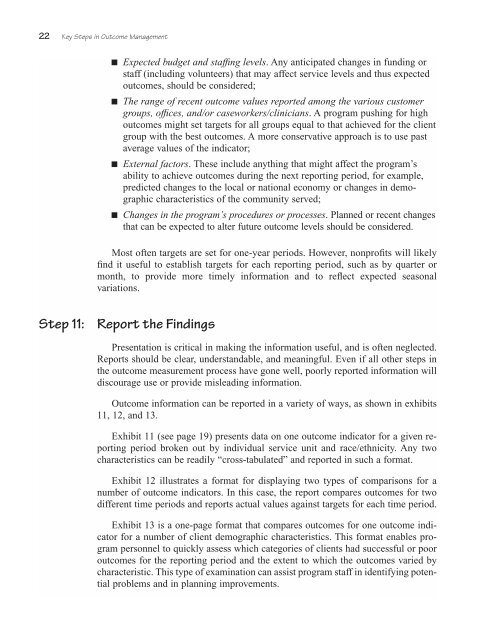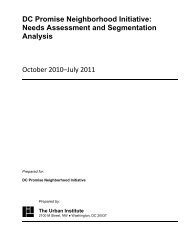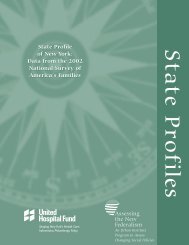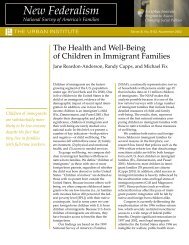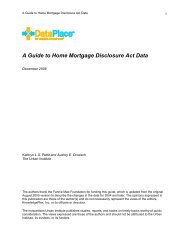(PDF) - Key Steps in Outcome Management - Urban Institute
(PDF) - Key Steps in Outcome Management - Urban Institute
(PDF) - Key Steps in Outcome Management - Urban Institute
- No tags were found...
Create successful ePaper yourself
Turn your PDF publications into a flip-book with our unique Google optimized e-Paper software.
22 <strong>Key</strong> <strong>Steps</strong> <strong>in</strong> <strong>Outcome</strong> <strong>Management</strong>Expected budget and staff<strong>in</strong>g levels. Any anticipated changes <strong>in</strong> fund<strong>in</strong>g orstaff (<strong>in</strong>clud<strong>in</strong>g volunteers) that may affect service levels and thus expectedoutcomes, should be considered;The range of recent outcome values reported among the various customergroups, offices, and/or caseworkers/cl<strong>in</strong>icians. A program push<strong>in</strong>g for highoutcomes might set targets for all groups equal to that achieved for the clientgroup with the best outcomes. A more conservative approach is to use pastaverage values of the <strong>in</strong>dicator;External factors. These <strong>in</strong>clude anyth<strong>in</strong>g that might affect the program’sability to achieve outcomes dur<strong>in</strong>g the next report<strong>in</strong>g period, for example,predicted changes to the local or national economy or changes <strong>in</strong> demographiccharacteristics of the community served;Changes <strong>in</strong> the program’s procedures or processes. Planned or recent changesthat can be expected to alter future outcome levels should be considered.Most often targets are set for one-year periods. However, nonprofits will likelyf<strong>in</strong>d it useful to establish targets for each report<strong>in</strong>g period, such as by quarter ormonth, to provide more timely <strong>in</strong>formation and to reflect expected seasonalvariations.Step 11:Report the F<strong>in</strong>d<strong>in</strong>gsPresentation is critical <strong>in</strong> mak<strong>in</strong>g the <strong>in</strong>formation useful, and is often neglected.Reports should be clear, understandable, and mean<strong>in</strong>gful. Even if all other steps <strong>in</strong>the outcome measurement process have gone well, poorly reported <strong>in</strong>formation willdiscourage use or provide mislead<strong>in</strong>g <strong>in</strong>formation.<strong>Outcome</strong> <strong>in</strong>formation can be reported <strong>in</strong> a variety of ways, as shown <strong>in</strong> exhibits11, 12, and 13.Exhibit 11 (see page 19) presents data on one outcome <strong>in</strong>dicator for a given report<strong>in</strong>gperiod broken out by <strong>in</strong>dividual service unit and race/ethnicity. Any twocharacteristics can be readily “cross-tabulated” and reported <strong>in</strong> such a format.Exhibit 12 illustrates a format for display<strong>in</strong>g two types of comparisons for anumber of outcome <strong>in</strong>dicators. In this case, the report compares outcomes for twodifferent time periods and reports actual values aga<strong>in</strong>st targets for each time period.Exhibit 13 is a one-page format that compares outcomes for one outcome <strong>in</strong>dicatorfor a number of client demographic characteristics. This format enables programpersonnel to quickly assess which categories of clients had successful or pooroutcomes for the report<strong>in</strong>g period and the extent to which the outcomes varied bycharacteristic. This type of exam<strong>in</strong>ation can assist program staff <strong>in</strong> identify<strong>in</strong>g potentialproblems and <strong>in</strong> plann<strong>in</strong>g improvements.


